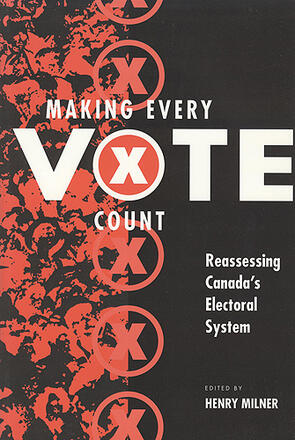
Making Every Vote Count
Reassing Canada's Electoral System
La description
Steps Toward Making Every Vote Count brings together the best analyses from the best qualified observers on developments in the growing movement to reform Canada’s electoral system.
Among mature democracies, only the United States and Canada use the first-past-the-post (FPTP) system for electing all state and provincial, as well as national, lawmakers. In Canada the debate over the electoral system, which began in earnest after the 1997 federal election, is now moving from the university and think-tank seminar room to the floor of five provincial legislatures.
Four key chapters present up-to-date accounts of developments in BC, Québec, PEI, and Ontario. They show the provinces moving at different speeds toward meeting an objective to propose a specific model of proportional representation that also ensures a continued role for directly elected representatives of specific geographic boundaries. Two chapters recount experiences in New Zealand and Scotland, which have adopted electoral plans attempting just such a balance. Others look at South Africa, Japan, France, and the United Stateseach selected for the light it casts on a specific aspect of electoral system reform. The remaining chapters consider various practical implications of changing Canada’s electoral system - now a very real prospect.
Reviews
This clear, crisply written, and well-rounded book will be a handy reference guide to those following what has become an important debate in contemporary Canadian politics.
- <i>American Review of Canadian Studies</i>